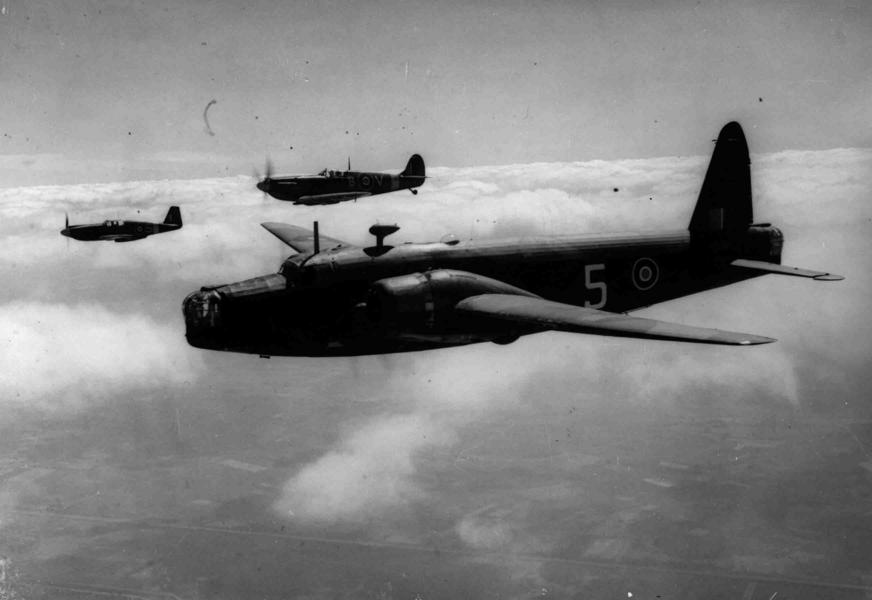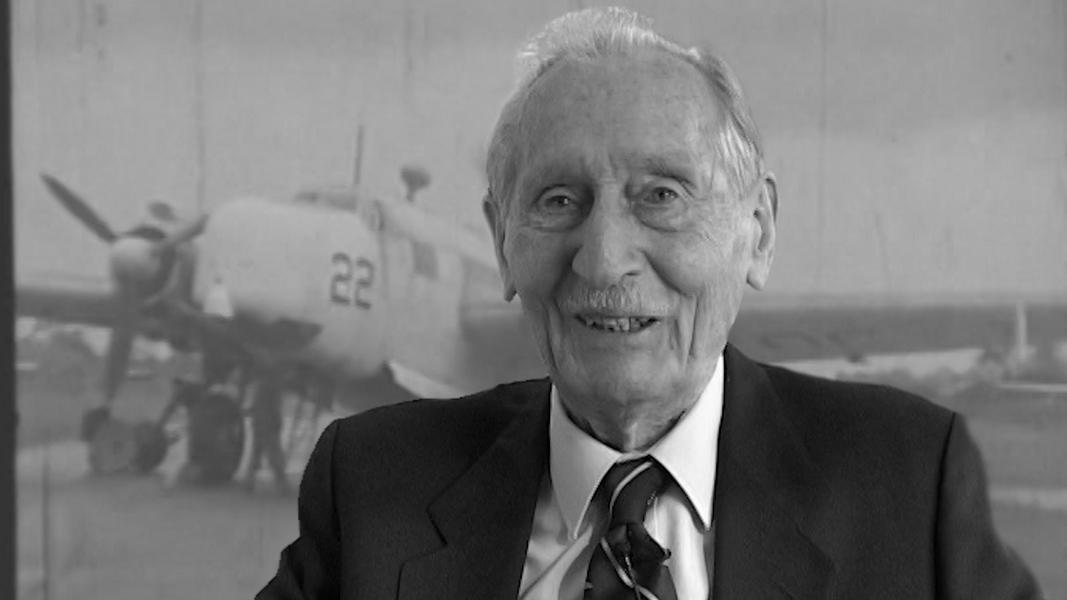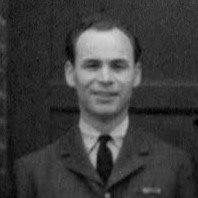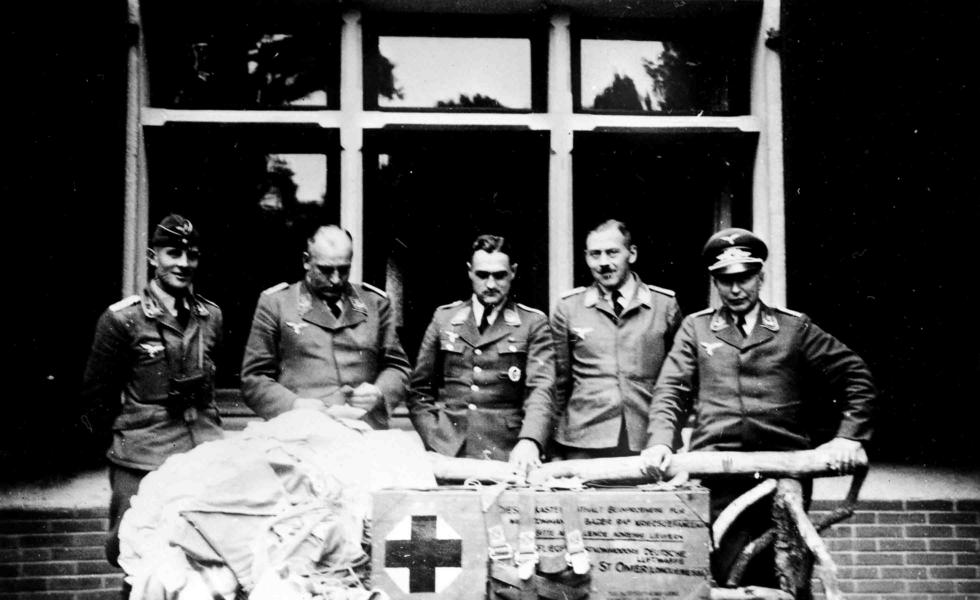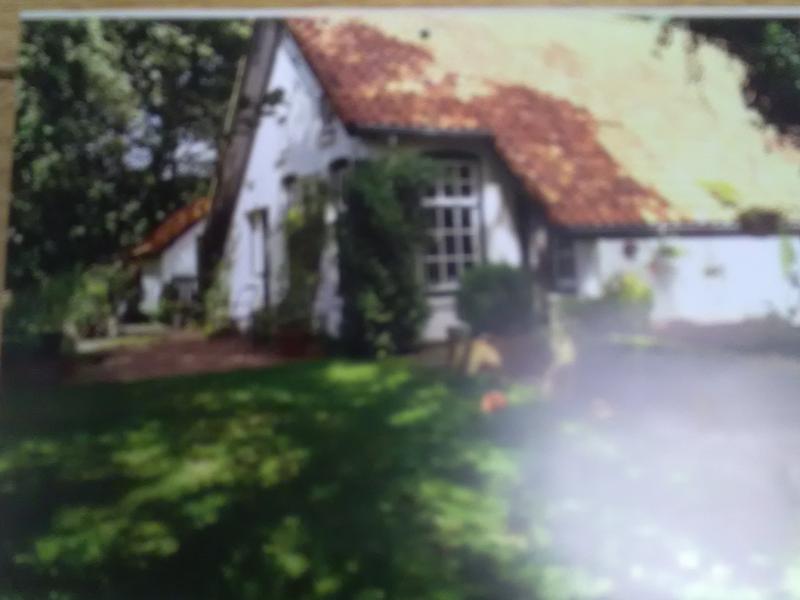operational training unit, learning to fly the waves.
First of all, the fellows are like, god,
the size of this aircraft.
Coming from the Anderson, the twin engines,
it was big enough.
Well, my goodness.
Because you climb up, get in, it's in the aircraft,
it's underneath the front.
You climb over the ladder, and you get in.
The other thing, the other impression I got,
was when you got in, the wings,
seemed to have sort of moved slightly,
they just slide em out.
I was, oh my god.
But then, you got used to it.
It was a very nice aircraft to fly.
It was not as easy to fly as the Anderson,
but nevertheless, it was very nice.
That particular model,
it was One C,
they we're constant speed,
engines.
Not very good pitch.
But constant speed, was rather different.
But it had that to contend with as well,
getting the two engines synchronized, you know.
But it's always, think of it more as getting
the right sort of settings.
You could make a nice, nice landing,
nice smooth landing, you know.
You feel very proud, very proud of yourself.
Of course then if you added,
five other people on board, with you.
Two pilots, the pilot, second pilot,
navigator, bars up air gunner, front gunner, rear gunner.
So, that was an incentive to do your best, wasn't it?
Laughs.
